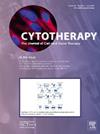用于胰腺和肝脏疾病细胞和基因治疗临床前评估的靶向动物模型:监管和实践见解。
IF 3.7
3区 医学
Q2 BIOTECHNOLOGY & APPLIED MICROBIOLOGY
引用次数: 0
摘要
细胞和基因治疗(CGT)产品已经成为再生医学的一种流行方法,在许多临床试验中显示出治疗各种胰腺和肝脏疾病的希望。在这些疗法可以在人体临床试验中进行测试之前,有必要在相关动物模型中评估其安全性和有效性。这种临床前测试通常需要获得监管机构批准的研究新药。然而,对于针对特定胰腺和肝脏疾病(如胰腺炎和慢性肝病)选择合适的CGT治疗动物模型,缺乏详细的指导。在这篇综述中,国际细胞和基因治疗学会胃肠道委员会提供了一份关于动物物种和疾病模型选择的当前建议的总结,这些建议由美国食品和药物管理局概述,并参考了欧盟EMA和日本PMDA。我们讨论了一系列小型和大型动物模型,以及适合用于治疗胰腺和肝脏疾病的CGT产品的临床前测试的人性化模型。对于每个模型,我们涵盖了相关的病理生理学,用于评估疾病状态的常用指标,模型的优点和局限性,以及这些模型与人类状况的相关性。综述了人源化小鼠和其他动物模型在评价CGT产品安全性和有效性方面的应用。本综述旨在为选择合适的动物种类和模型提供全面的指导,以帮助弥合CGT治疗特定胰腺和肝脏疾病的临床前研究和临床试验之间的差距。本文章由计算机程序翻译,如有差异,请以英文原文为准。
Targeted animal models for preclinical assessment of cellular and gene therapies in pancreatic and liver diseases: regulatory and practical insights
Cellular and gene therapy (CGT) products have emerged as a popular approach in regenerative medicine, showing promise in treating various pancreatic and liver diseases in numerous clinical trials. Before these therapies can be tested in human clinical trials, it is essential to evaluate their safety and efficacy in relevant animal models. Such preclinical testing is often required to obtain regulatory approval for investigational new drugs. However, there is a lack of detailed guidance on selecting appropriate animal models for CGT therapies targeting specific pancreatic and liver conditions, such as pancreatitis and chronic liver diseases. In this review, the gastrointestinal committee for the International Society for Cell and Gene Therapy provides a summary of current recommendations for animal species and disease model selection, as outlined by the US Food and Drug Administration, with references to EU EMA and Japan PMDA. We discuss a range of small and large animal models, as well as humanized models, that are suitable for preclinical testing of CGT products aimed at treating pancreatic and liver diseases. For each model, we cover the associated pathophysiology, commonly used metrics for assessing disease status, the pros and limitations of the models, and the relevance of these models to human conditions. We also summarize the use and application of humanized mouse and other animal models in evaluating the safety and efficacy of CGT products. This review aims to provide comprehensive guidance for selecting appropriate animal species and models to help bridge the gap between the preclinical research and clinical trials using CGT therapies for specific pancreatic and liver diseases.
求助全文
通过发布文献求助,成功后即可免费获取论文全文。
去求助
来源期刊

Cytotherapy
医学-生物工程与应用微生物
CiteScore
6.30
自引率
4.40%
发文量
683
审稿时长
49 days
期刊介绍:
The journal brings readers the latest developments in the fast moving field of cellular therapy in man. This includes cell therapy for cancer, immune disorders, inherited diseases, tissue repair and regenerative medicine. The journal covers the science, translational development and treatment with variety of cell types including hematopoietic stem cells, immune cells (dendritic cells, NK, cells, T cells, antigen presenting cells) mesenchymal stromal cells, adipose cells, nerve, muscle, vascular and endothelial cells, and induced pluripotential stem cells. We also welcome manuscripts on subcellular derivatives such as exosomes. A specific focus is on translational research that brings cell therapy to the clinic. Cytotherapy publishes original papers, reviews, position papers editorials, commentaries and letters to the editor. We welcome "Protocols in Cytotherapy" bringing standard operating procedure for production specific cell types for clinical use within the reach of the readership.
 求助内容:
求助内容: 应助结果提醒方式:
应助结果提醒方式:


